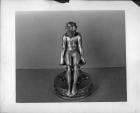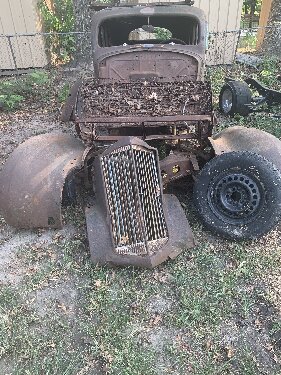|
Re: 16th and 17th Series V-12 Water Pump Removal
|
||||
|---|---|---|---|---|
|
Just popping in

|
"here's the scoop"...eh ? So you "read a book".
Tim - PLEASE - I am not making fun of you. I have met some of the folks who frequent this forum, and have talked to others, and know you are mostly a bunch of really nice guys who really love Packards. My criticism is NOT of you personally, it is of a phenomena that seems to infect all aspects of our culture. And that is - a raging desire to "spout off" just to be heard, without any serious interest in the FACTS. Bob Turnquist was a hell of a nice guy. When Sonny and he hosted me at their lovely home, I felt I was in the presence of particularly charming, wonderul, and intelligent people who shared my love of the special company and its products that were P A C K A R D ! As sharp as Bob was, he did get himself into trouble with me from time to time making enthusiastic statements - but he was quick to be a gentleman and admit that he personally was NOT a hands-on Packard mechanic. I cannot find the section you are referring to in his book. But I dont doubt that Bob was a human guy, who, like me, would occasionaly make mistakes in his beliefs about PACKARDS. Sure he hung around his shop and knew a great deal, but was the first to admit there was a lot more he did NOT know. Looking at the '38 - '39 Twelve chassis layout in the REAL world, the motor most certainly DID NOT MOVE from its previous position on 1935-1937 models. What happened was Packard engineers recognized that the further foward the "mass" of the motor was, in relation to the front wheel-center, the more stable the vehicle would be at extreme speeds. How to improve extreme speed stability "on the cheap" ? Simple - the front suspension was moved BACKWARD. Rest of the chassis on '37 - '39 Twelves is pretty much identical for any given body style. Again, the FRONT END of the chassis and sheet metal foward of the fire-wall were shortened. Again, this was a VERY clever way of changing the weight relationship of the front end to the wheel-centers, without spending a lot of money on major body/frame relationships on a product that was about to be discontinued! And it WORKS ! The few inch difference in where the front wheel centers are on the '38 - '39 Twelves ( compared to the '37) DOES give a bit of extreme speed straight line stability over the earlier Twelves (also makes them SLIGHTLY less "sporty" at lower speeds on curves ! ). THAT is why the front of the oil pan casting has a notch in it to clear the tie-rod center crank position, that the '37 and earlier Twelves, (again, with their motorsmounted in the same place, but their suspensions and wheel-centers further foward of the engine) did not need. Now - for a detailed answer to the question that started this "thread". The water pump of '38 - '39 Twelves most certainly can be removed without taking the front clip apart, IF. That's the problem - the big "IF". Modern analysis shows that the pre-war aluminum used in the cyl. heads and front-timing case covers would, these days, not be fit to make lawn chairs out of. As a result, the BOLTS that fastened the pump to the front engine case would "strip out" the much softer threads in that front-cover. It wasnt long before many '38 - '39 Twelves had their water pumps held down with STUDS permanently set up in the front cover. With the "stud" equipped front case covers, of course you cannot move the Twelve's water pump far enough foward to get it out without removing the radiator (you can't tilt it foward like you can with earlier Packards). So - the real problem for the fellow who asked the question, is to determine HOW the water pump was affixed to the front cover. If it is un-touched, and fastened with BOLTS, once it is un-bolted (and, of course, the fan removed) it will come right off. Trouble is, that means it has an original front case cover, which SHOULD BE REPLACED WITH A REPRO FRONT COVER MADE FROM MODERN ALUMINUM. Yes, it is a pain to service the water pump when it is in a car that has been re-fitted with STUDS, rather than threads in the case cover. But that is the proper shop proceedure to guard against the bolts "stripping out". I personally do not like threads in aluminum. I think it is a wise shop practice to put steel inserts in the cyl. heads for the spark plugs, even on the modern "repro" alum. cyl. heads. That is why even on the "repro" front timing case covers on the Twelves, I recommend using STUDS instead of bolts threaded into those covers. Good luck to all of you Bye Bye !
Posted on: 2009/7/15 11:35
|
|||
|
||||

Hello and welcome to Packard Motor Car Information! If you're new here, please register for a free account.







